10 Examples of Conversational Commerce in Action

Engaging in authentic conversations has always been an effective way to sell across all industries.
Consider a consumer walking into a brick-and-mortar store, searching for new skincare products. They’re greeted by a sales associate, who strikes up a conversation to learn more about the consumer’s lifestyle and needs. After building rapport, the consumer trusts the associate’s recommendations and ends up purchasing multiple products. The next time the consumer is in need of skincare products, they go back to the same store – and ask for the sales associate by name.
Or, consider another consumer who decides to upgrade their homeowners insurance after a conversation with their trusted insurance advisor.
Though a growing number of purchases are made online, conversations remain a vital sales strategy. However, the channels customers and brands use to engage in these conversations are changing.
Today, customer centric brands are embracing conversational commerce, which is empowering them to digitally engage with customers in their moment of need, through their preferred channels. Those that do it well are boosting customer satisfaction – and growing sales.
Read on to explore what conversational commerce is, examples of it in action, why it matters, and how to start more effectively managing conversational experiences across channels.
What is Conversational Commerce?
Conversational commerce is a term that gained popularity in 2015, when Chris Messina, the inventor of the hashtag, penned a Medium article on the topic. But what does it mean?
Conversational commerce is the practice of engaging in conversations with consumers in real-time, at their moment of need. The ultimate goal of these conversation experiences is to move the consumer toward a purchase.
Brands can also engage in conversations after an initial sale happens. These conversations can lead to reorders. For example, a consumer could get an automated text messaging, reminding them that it’s time to reorder contact lenses. Post-sale conversations can also lead to upsells and cross-sells.
Brands that do conversational commerce well leverage a combination of automated responses and real-time conversations.
Ten Examples of Conversational Commerce in Action
One of the best ways to understand the power of conversational commerce is to see it in action. Here are ten examples of how brands are leveraging conversational commerce to connect with consumers in their moment of need.
1. Tiffany
Automated responses are those that are provided by digital assistants (also known as bots) or voice assistants (such as Amazon Alexa). These automated tools are effective for answering commonly asked questions and completing simple tasks that can move shoppers further down the sales funnel, such as providing the nearest store location or booking an appointment.
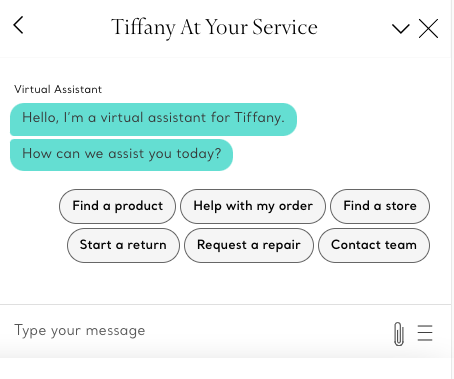
2. Williams Sonoma
Conversations can also be in real-time, with a real person, through channels including live chat, SMS, messaging apps, or even video messaging, among others.
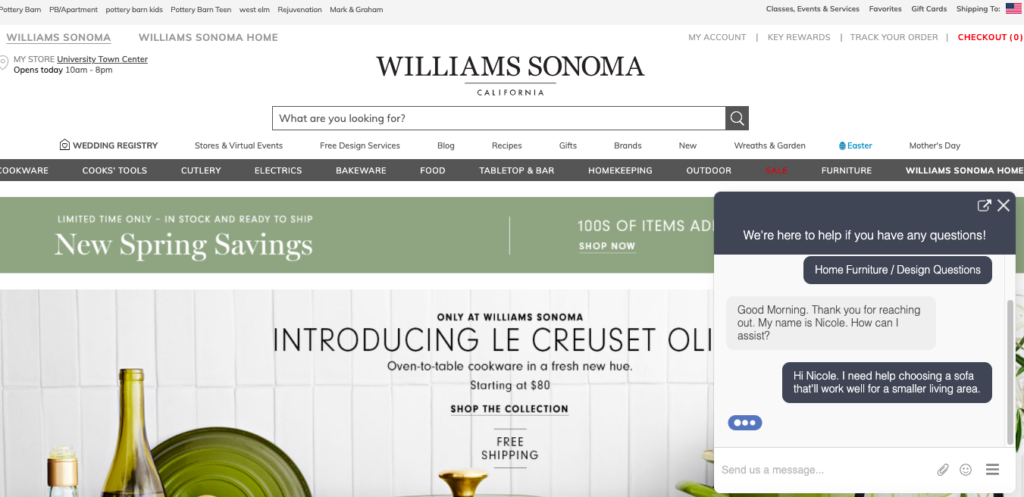
3. Tesla
Purchasing a vehicle – especially a high-end one like a Tesla, isn’t a decision most consumers take lightly. Rather, vehicle shoppers typically have a lot of questions before they commit.
While shopping for a vehicle online, visitors to Tesla.com have the opportunity to chat with a live representative, who can help them build their perfect vehicle – which they can order directly through the website. The live agent can use the conversation to upsell more premium features, as well as cross sell accessories and add-ons.
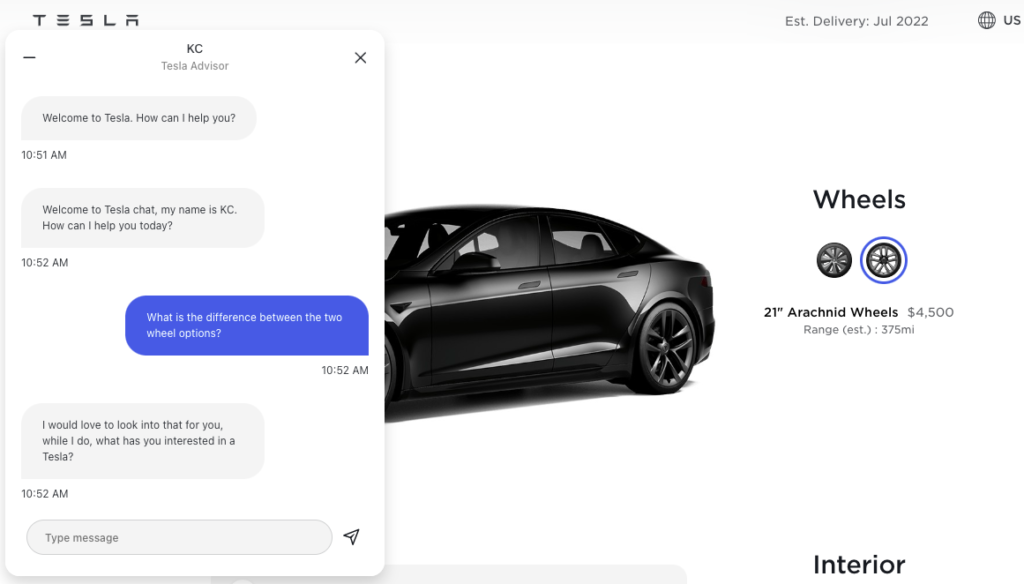
4. Lego
Shopping for a gift for a child can be challenging – especially when the child isn’t your own. Lego understands this and gives shoppers the opportunity to engage with the brand to make better purchase decisions.
Lego allows shoppers to engage with a live agent via Facebook Messenger. By asking a series of questions about a child’s age and interests, the agent provides recommendations, as well as links the shopper can use to purchase their chosen product.
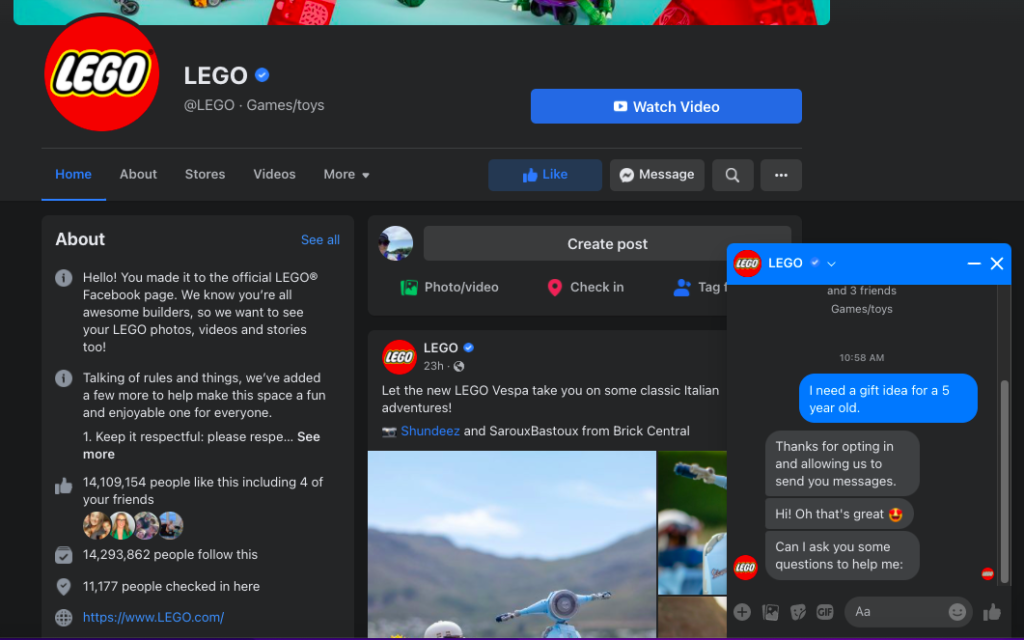
5. Coach
Luxury fashion brand Coach understands that texting is a top way consumers stay in touch. So, they invite shoppers to engage with them via text, too. A shopper might reach out via text to get help with an existing order – or to get product recommendations.
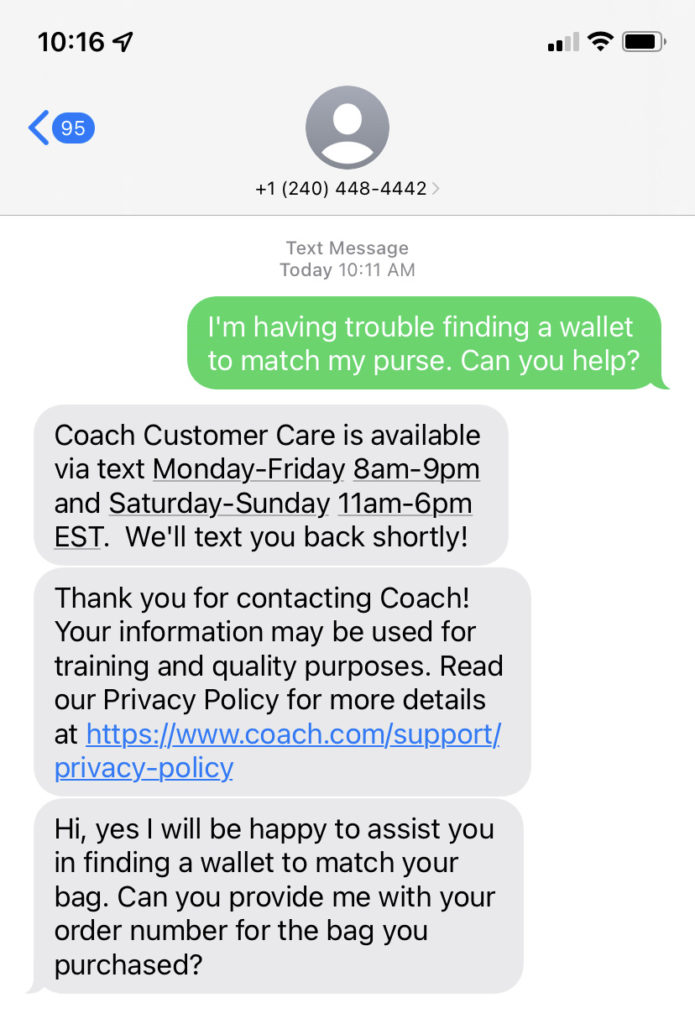
6. David’s Bridal
When a shopper begins the search for a bridal dress, they might do a Google search to find the nearest location of a bridal shop like David’s Bridal. David’s Bridal connects with those shoppers right where they are by leveraging Google’s Business Messages. In addition to displaying contact information in search results, a small icon appears, which allows consumers to initiate a chat via Google’s Business Messages.
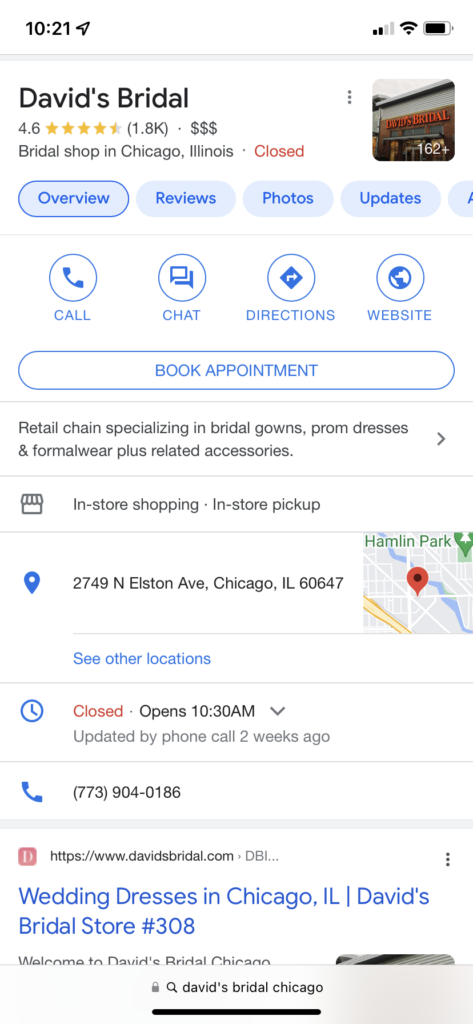
The brand leverages automation for simple requests, such as appointment-setting. More complex engagements, such as a request for styling assistance, are sent to a live representative. The shopper can then take the next step by scheduling an in-person appointment or buying the recommended products directly through the brand’s eCommerce site.
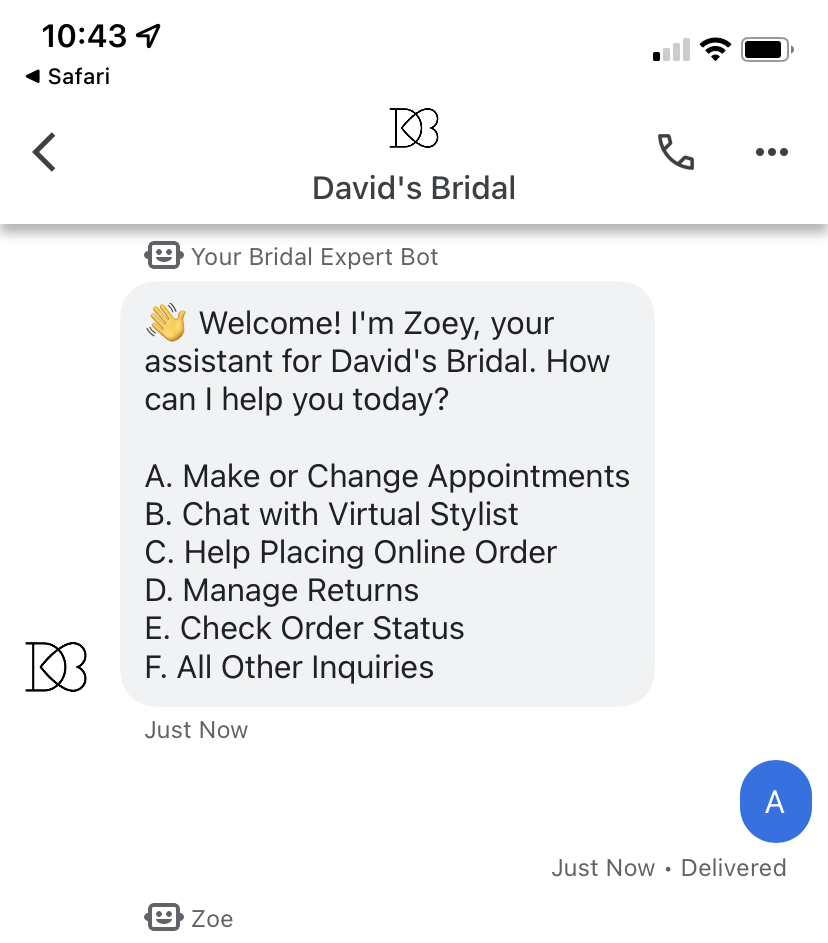
7. Equinox Fitness
Consumers often have questions about initiating new memberships (or modifying existing ones). But for whatever reason, many don’t want to pick up the phone to get assistance.
Equinox, a luxury fitness company, offers live chat to connect with consumers digitally. They use automation to help with simple inquiries, such as club locations and information about different classes that are offered. More complex conversations are transferred to an Equinox “concierge,” who can help consumers choose membership plans and sign up online, among other things.
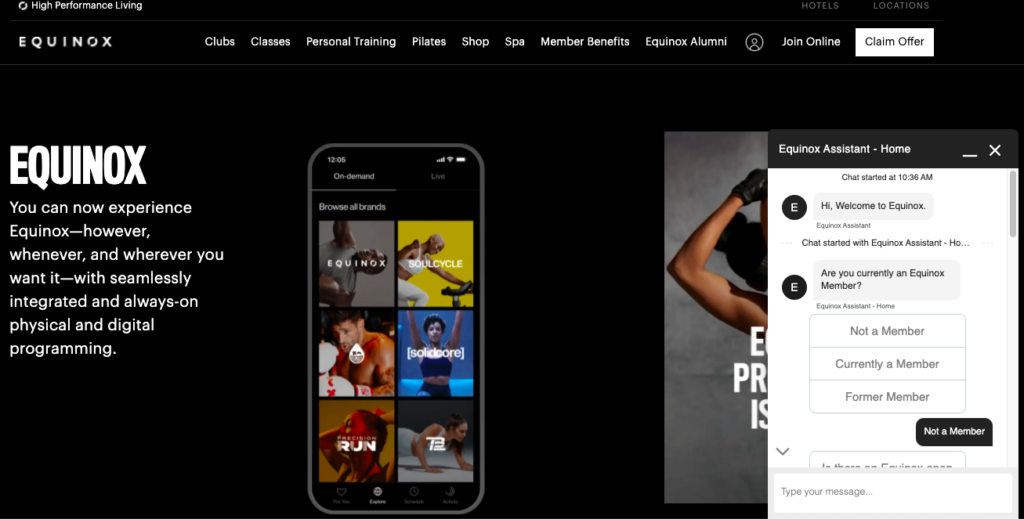
8. Chase
Consumers want to be able to connect with brands any time of day. Chase recognizes this, and allows customers to engage with the brand directly through their mobile app, 24/7. This experience is powered by a digital assistant, who helps consumers with simple inquiries – and points them in the direction of how to take further action, such as how to open a new bank account.
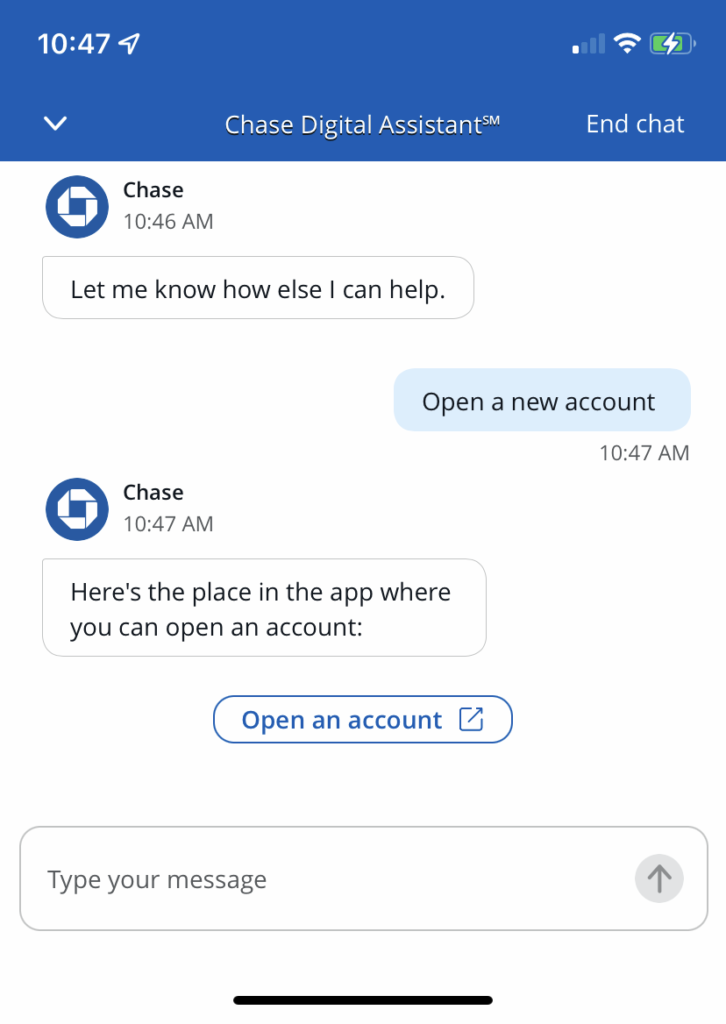
9. Michaels
Michaels, a chain of arts and crafts stores, provides visitors to their website with a unique conversational experience. In addition to chatting with a customer care agent to get help or recommendations, visitors also have the opportunity to engage with fellow shoppers.
These peer-to-peer conversations can spark ideas and inspiration – and lead to more sales.
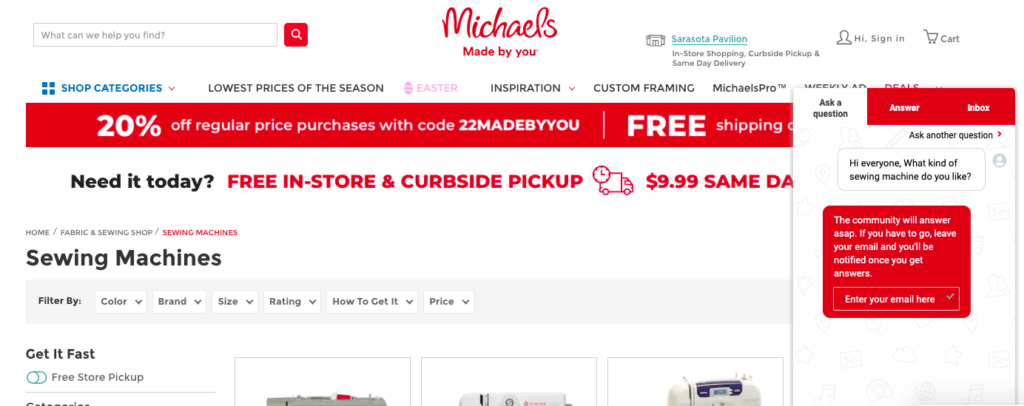
10. MAC Cosmetics
Different consumers prefer different conversational commerce channels. MAC gets it, and offers shoppers the opportunity to connect with MAC artists in a whole host of ways — including live chat, text messages, and even video chats.
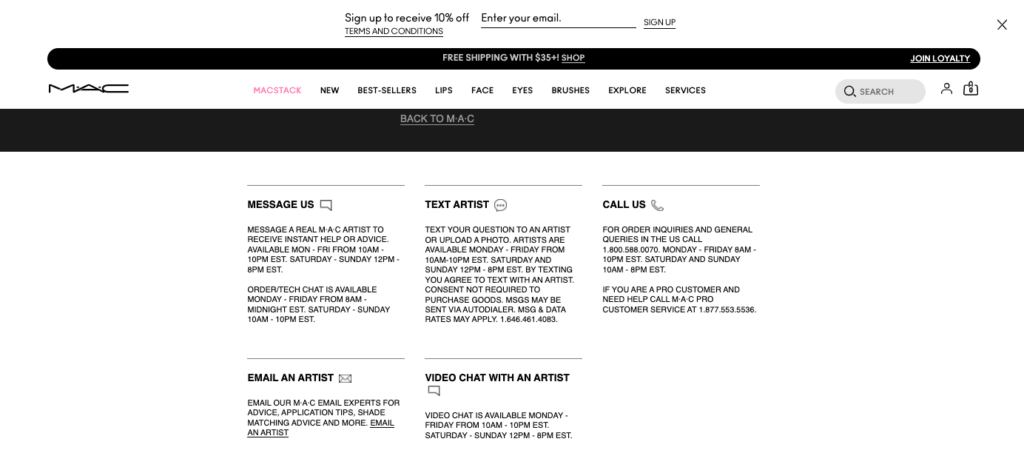
Why Conversational Commerce Matters
Consumer shopping trends are constantly shifting and evolving. So why should brands pay attention to conversational commerce?
Quite simply, because conversational commerce isn’t going anywhere anytime soon.
A Rise in eCommerce (and Mobile Shopping) is Causing a Shift in the Way Consumers Want to Engage with Brands
A growing number of consumers are embracing the convenience of online shopping. And many of them are doing so from their mobile devices. By 2025, it’s predicted that 10% of all retail sales in the U.S. will be generated via mobile.
Clearly, consumers have grown accustomed to shopping whenever and wherever they want. And increasingly, they expect to get service on their own terms, too. They’re no longer content to contact a company via phone during a rigid set of business hours. Instead, they want to get service 24/7 by using their preferred channels. Increasingly, the channels they prefer are the ones they’re already using on a daily basis.
Messaging Apps are Widely Adopted
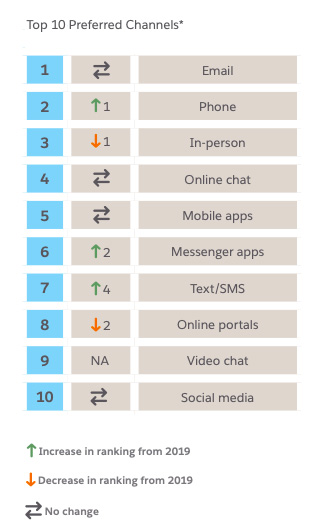
These days, just about anyone with a phone and an internet connection uses messaging and chat apps. In fact, nearly 91% of internet users across the world used chat or messenger apps, outpacing other app categories including social media and shopping. WhatsApp, WeChat and Facebook Messenger top the list of the most popular global messaging apps.
Increasingly, consumers want to be able to communicate with businesses in the same ways they interact with family and friends: via messaging. According to Salesforce search, online chat, messaging apps, and SMS are climbing the ranks of consumers’ preferred communication channels.
What’s more, our own research found that a significant portion of consumers already use (or are open to using) the following conversational commerce channels to communicate with brands:
- Text/SMS: 70%
- Live chat or website: 67%
- Facebook Messenger: 53%
Conversational Experiences are the Way to Meet Shoppers’ Expectations
It’s no secret that consumers have high expectations for great experiences.
For starters, they expect personalized experiences throughout the purchase journey. Per Salesforce, 66% of consumers expect companies to understand their unique needs and expectations. Yet only 34% of companies generally treat customers as unique individuals.
And they’re not willing to wait around for those great, personalized experiences. Salesforce also found that 83% of consumers expect immediate engagement when they contact a company.
In an increasingly competitive market, brands must consistently meet shoppers’ expectations – or risk losing customers. Brands that embrace conversational commerce are able to deliver speedy, personalized conversation experiences customers have come to expect – via their preferred channels.
Brands that engage in conversational commerce early in the purchase journey are able to provide information and recommendations that move shoppers through the funnel – and ultimately lead to a purchase. And post-sale conversational experiences provide brands with opportunities to cross-sell, upsell, and foster loyalty.
Start Effectively Managing Your Conversational Commerce Channels
Embracing conversational commerce is an effective way to grow sales. But it can be challenging to effectively manage several conversational commerce channels. You must have a strong strategy in place to ensure consumers get the fast, accurate, and personalized responses they expect – regardless of messaging channel.
Messaging Studio from 1440 can help, by allowing you to manage all of your customers’ favorite messaging channels right within Salesforce. Contact us to learn more.